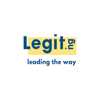Research Seminar Report & Journal Publication Guidelines
This is the general accepted format for developing a standard seminar and journal publication. It can also serve as guide for Final Year Project Research as they have similar format.

Source: UGC
This is the general accepted format for developing a standard seminar and journal publication. It can also serve as guide for Final Year Project Research as they have similar format.
Format
- For Journal, it should be 1.5 line spacing and not more than 15pages
- For seminar, it should be 1.5 line spacing and not more than 25 or 30 pages
Topic
· Should be Bold and centralized
· Font: Times New Roman, size 16
Author’s Name(s)
· Bold
· Format: Surname in UPPERCASE, other names capitalized only on the first letter
Author’s Affiliations
· Include institution - Check list of schools that their admission is still on
· Email address
· Telephone number(s)
Abstract
- Max 500 words
- Concise summary including:
a. Project/Study objective
b. Method used
c. Major findings
d. Recommendations
- Avoid abbreviations (or explain at least once)
- Format: Single-spaced, italicized paragraph
INTRODUCTION
· Double line spacing from Abstract
· Provide a comprehensive background of the subject matter
· Heading: Bold and capitalized
· Text: Justified, Times New Roman, size 12, not italicized
LITERATURE REVIEW
· Single line spacing from Introduction
· Discuss at least 10 related studies
· Heading: Bold and capitalized
2.1 Conceptual Framework
· Bold, only first letter capitalized
· Include definitions of variables from various authorities
· Author may establish own definition
2.2 Empirical Review
· Bold, only first letter capitalized
· Discuss previous findings and indicate alignment or disagreement
2.3 Theoretical Framework
· Bold, only first letter capitalized
· Discuss theories underpinning the subject matter
METHODOLOGY
· Bold and capitalized
· Clear, concise, precise explanation of analytical methods
· Include quantitative, statistical, or theoretical techniques as applicable
RESULT AND DISCUSSION
· Bold and capitalized
· Interpret and discuss findings based on methodology
· Include tables, graphs, and quantitative analysis as needed
Example Table:
Variable | Mean | Standard Deviation | Remark |
Social Media Engagement | 4.2 | 0.8 | Significant |
Purchase Intention | 3.8 | 1.0 | Moderate |
CONCLUSION AND RECOMMENDATIONS
· Bold and capitalized
· Provide logical conclusion from discussion
· Suggest practical recommendations
Example:
· Digital engagement drives consumer behavior; marketers should focus on interactive content.
· Businesses are encouraged to invest in analytics tools to monitor campaign performance.
REFERENCES
· Bold heading
· Alphabetical order
· APA Style 7th edition (or latest)
Example: Kotler, P., & Keller, K. L. (2022). Marketing management (16th ed.). Pearson. Smith, J. (2021). Consumer behavior in the digital age. Journal of Marketing Research, 58(3), 245–263.
[Sponsored]
Source: Legit.ng


